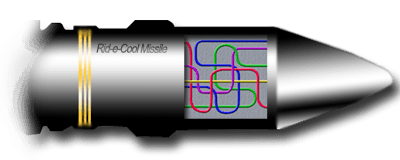The History of MI6
MI6 was originally created from the Secret Service Bureau in October 1909. At that time, the Bureau was divided into a naval section and an army section.
The naval section was in charge of foreign espionage while the army section was responsible for counterintelligence inside UK. The naval section was turned into MI6 while the army section into MI5. The Secret Service Bureau was renamed SIS in 1911.
Captain Mansfield Cumming was the first head of SIS. Cummings used C as a code name. Every Director of MI6 since then has used the initial C. SIS faced severe challenges in the First World War. The agency was unsuccessful in installing agents in Germany. However it used a network of spies in occupied territories and Russia with great success against Germany.
After the war, SIS used Diplomatic Service to install operatives inside embassies. These "Passport Control Officers" controlled SIS activity in that country. Although useful, this system became known to most foreign governments by the late 30s. The Admiralty and war office were given partial operational control of MI6 in the 20s. The 1921 arrangement used liaisons to set goals for operational groups and sent its results to the home departments. This structural arrangement is still used by SIS.
The 20s saw SIS divert its attention towards Russia. It started espionage activities inside Russia. The agency also tried to bring down the Communist Party with the help of people like Boris Savinkov and Sidney Reilly.
Sir Hugh Sinclair was made director of MI6 in 1923. Sinclair endowed the agency with new responsibilities. He started Section V that worked in collaboration with MI5 to perform counterintelligence. This collaboration resulted in gathering of counter intelligence information from various countries. This counter intelligence information was then sent to MI6 agents all over the world.
Other sections created in this time include Section N that intercepted foreign diplomatic mail, Section D for covert and paramilitary actions of political nature in war, Section 7 for economic intelligence and Section 8 for radio communications of SIS operatives.
With the rise of Nazis, SIS shifted its attention towards Germany in the 30s. The agency found some reliable informants in Germany but was not as successful as the Foreign Office during the Second World War. Existing network of spies recruited by SIS were damaged during the war. MI6 oversaw the work of code breaking done by Government Code and Cipher School.
The Enigma code was broken during this project and information was sent to the allied commanders throughout the world. It ran the secure wireless network under project ULTRA that broadcast decoded Enigma information to Allied army.
One section of MI6 was also involved in the Special Operations Executive (SOE). The purpose of SOE sabotage enemy facilities and collect intelligence throughout Europe. The Venlo incident stained the agencys image when two of its agents were abducted by the German intelligence.
After initial setbacks SIS began to conduct successful operations. In the Middle East, Europe and Asia it operated under the codename of 'Interservice Liaison Department'.
In 1946, the 1921 arrangement was reformed and units were sorted regionally. These units were handled by local handlers. Remaining SOE agents were absorbed in the SIS. The agency had to reassess their priorities during the cold war. The soviets were very successful in penetrating high level government officials in England.
Kim PhilbyOne of the reasons was that the counter espionage section called R5 was headed by Kim Philby. Kim Philby was a communist sympathizer and had provided KGB with sensitive information for years. Due to spies like the Cambridge Five group and George Blake, MI6 counterintelligence efforts were thwarted easily by KGB.
This situation began to reverse by the 60s. The agency was able to recruit several reliable sources within the USSR. One of these recruits was Colonel Oleg Penkovsky. He provided the agency several thousand important documents about the Russian military. He was able to provide Russian rocket manuals that uncovered Soviet plans to deploy missiles in Cuba.
MI6 collaborated with CIA to overthrow Mossadeq government of Iran in 1953. It also managed to start a power struggle in Lebanons paramilitary groups in 1980. The bulk of SISs efforts were aimed at the USSR and it managed to recruit several Russian agents who traveled abroad to other countries.
After the Cold War, SIS began to focus on security risks rather then concentrating on geographical regions. The prime areas of interest were Irish Republican Army, serious crime, counter terrorism, narcotics, nuclear proliferation and other areas of public welfare. Some of these activities were a joint collaboration between MI6 and other agencies.
Under the leadership of Sir Collin McColl the agency adopted the policy of limited openness about their work to the public.
After the soviet threat, Britain cut its defense budget. As a result MI6 received 25% less funding and almost forty percent of its management retired. The African and Middle East sections were made as one. Critics have contributed these cuts as a major factor behind the erroneous intelligence about Iraqs weapons of mass destruction.













New! Comments
Savvy spies can comment here... Just leave me a comment in the box below.